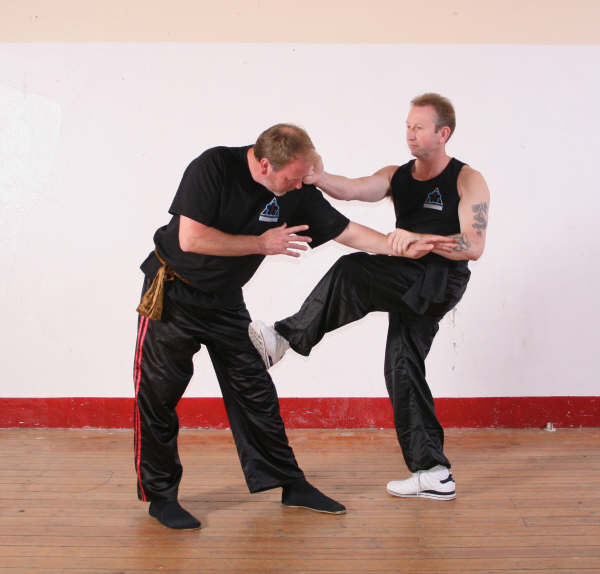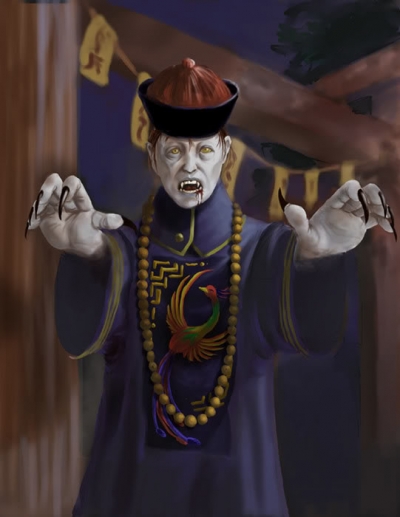Can you expand on this a little bit? How are you defining "linear" and "angular" in this context, and how is it the end of the technique instead of the start?
When I teach linear and angular concepts, you have to think of it as relation to your opponent. A linear attack is one where you move forward to attack your opponent. Think of a line drawn on the ground from you and your opponent, where both of you are facing each other. A linear attack is one that occurs on this line. An angular attack occurs off the line. Certain techniques will only make sense and work if you look at it from the perspective of an angled attack.
The picture below shows linear concept on the left and angular concept on the right. The kick that Kung Fu Wang is talking about is always practiced in forms from a linear perspective and because of this we always think of it as a kick to the groin. Then when we try to pull it off in sparring, it becomes really difficult to do. The reason why is because in practice we use the linear perspective. In real world application we use the angular perspective. (Keep in mind this is only for the kick and simultaneous punch and strike.

Here the reality of fighting, people rarely stay on that center line. The second reality is that martial arts forms and katas are full of techniques. Some of the techniques are actual fighting combos, some are single strikes, some are combinations that work better at the beginning for a combination attack, and others work better at the end of your combination attack. Some are appear to be simultaneous attack that cause your opponent's mind to "Glitch" and that gives you more than enough time to land the strike successfully. There's just tons of things that you have to dig deep down in order to understand, it will take time and a lot of thinking, but eventually things will make sense. But back to the kick and punch.
If I look at the kick and punch from a linear perspective then my kick will be longer than my punch. Looking at the picture above, if the brown head guy kicks and punches the blue guy then his kick will be longer than his punch. However, this is not the case with the angular perspective. If the brown head guy punches with his left arm (arm closest to blue's arm) then his arm will be able to reach blues face at the same time that the kick reaches the body.
To understand techniques at the beginning and ending of combinations, you'll have to understand the effect that your technique has on a person. The rule is simple.
If it's too difficult to use the technique at the beginning of an attack then it means that it probably comes in the middle or the end of a technique. Tai chi has a good technique that can be used to palm strike and kick at the same time.
I've been hit with this one a few times from a classmate that I used to train with. I got hit in the face and kicked in the leg at the same time and my brain didn't know which part of my body to register pain first. The best way to put it is that you get punched in your face, but your leg feels the pain. It's a weird feeling. In application the kick isn't this high and it flies under the field of vision. So your brain registers the hand visually and doesn't understand nor see that the kick is coming in. So you feel the impact of the face strike but you get kicked where you were totally defenseless. I don't practice this at all, I just know it works because I got nailed with it a couple of times.



